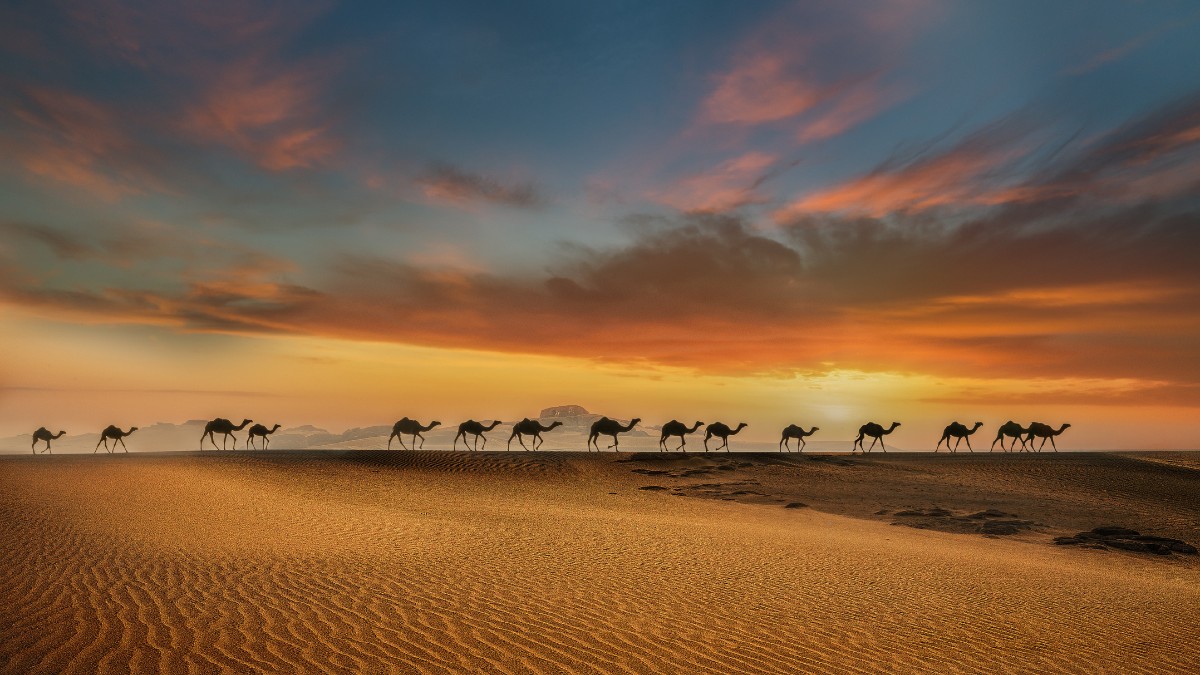Global govt’s make Sydney pilgrimage to win Aussie miners but tried and true jurisdictions remain best bet for big investors

Via Getty
- Governments from around the world have come to Sydney’s IMARC event lobbying for investment from Australian miners
- Saudi Arabia eyes Aussie investors to back diversification from oil to critical minerals
- Hedley Widdup says Australia remains jurisdiction of choice for junior miners
The 2022 edition of the International Mining and Resources Conference — one of the world’s largest mining gatherings — opened in Sydney today with a charm offensive from, of all people, the mines minister of Saudi Arabia.
Bandar bin Ibrahim Al Khorayef’s pitch, buttressed by a welcome to country from Metropolitan Local Aboriginal Land Council president Allan Murray and ESG commentary from former Kiwi PM Helen Clark, called on Aussie miners to join in an investment splurge on minerals the oil-rich Middle Eastern kingdom is planning over the next decade.
The Riyadh delegation was one of a number from nations and territories as far off as Quebec, Chile and Peru to come to Sydney calling for investment.
Most metals production in the country is handled by state owned Ma’aden, which reported a 65.3% YoY rise in quarterly profit to US$560.5m this for September.
But it is aiming to tap investment from outside the country, backed with 700,000sqkm of pre-competitive geological data to develop what Al Khorayef says is US$1.3 trillion in resources of gold, aluminium, phosphate, copper and uranium partly to back technology and infrastructure for the energy transition.
The Saudis have awarded 5 mineral licences this year, with another 10 to be released soon.
“These four pillars of our strategy have resulted in more binding investment in Saudi Arabia than ever before, with a total of US$8 billion worth of FDIs in 2021 alone, more than 145 licenses issued, and also a year on year growth in our mining revenue by 27%,” Al Khoraeyef said.
“Moreover, we have an ambitious strategy to attract investments worth of US$32 billion to mining and mineral sector. So this is only the beginning.
“We are confident that we can accelerate the implementation of local content development and transform the Kingdom of Saudi Arabia into an industrial powerhouse capable of meeting the needs of the net zero targets.”
Where is the best place to invest?
More than ever governments seem to be rolling out the red carpet for miners to back the development of what is termed ‘critical minerals’.
Underpinning this is the drive to net zero, a global economic shift that will require a dramatic increase in mine development, and a growing desire among countries to ween themselves off supply chains dominated by China and Russia.
Whether Saudi Arabia will be successful in convincing western miners it is a good place to invest remains to be seen.
They are not the only governments spending and talking big to encourage or deliver investment for miners.
“2021 was a massive year in the IPO markets for mining, this year is a little bit less,” Resource Capital Funds director of projects Lauren McGregor said.
“But I think what that means for junior miners is actually alternative finance is pushing down a little bit on the on the value chain.
“We’re seeing government stepping in now in a way that they weren’t doing 20 years ago.
“We’ve got NAIF, we’ve got Clean Energy Finance (Corporation) here in Australia, and we’re hearing the Biden administration also talking about funding for critical minerals.”
The role of Government
EMR Capital managing director Jason Chang, whose Owen Hegarty led mining investment vehicle owns the Ravenswood gold and Kestrel coal mines in Queensland and holds a 45% stake in ASX-listed copper miner 29Metals (ASX:29M), says all it looks for in governments is consistency and a predictable regulatory framework.
“The role of government really from a mining perspective is to develop and regulatory framework that is consistent fundamentally,” he said.
“We love South America and Chile, we have invested in Chile and continue to look there. I mean, how can you not?
“But the are recent announcement that potentially there could be a material hike in taxes has caused global investors to just pause for a moment.
“I’m sure it’ll come back and I know there’s good news on the way. But that’s a classic example where even just announcements there could be a disruption to what otherwise is the most friendly jurisdiction in the world for mining can cause issues.
“We’ve seen that for example in Queensland (with its coal royalty increase), that’s I think very harmful for investment, and it will cause disruption to investment flows.”
Look closer to home
With so many jurisdictions now vying for investment, especially in critical minerals, some experts have cautioned the best place for Australian miners to look is still their own backyard.
Lion Selection Group (ASX:LSX) sold out of its Pani gold project in Indonesia for $74m “plus upside” in January this year.
It has since paid out a dividend to shareholder and been scouring for a new project or projects to invest in.
LSX’s Hedley Widdup, widely respected for his views on the resources cycle and his invention of the “Mining Clock” to assess our proximity to the peak of a mining boom, told Stockhead the best jurisdictions in his eyes lie in Australia.
“(Pani is a) wonderful asset, but in a country, which is very, very tough to manage an investment in, particularly if you’re not the operator, and you’re at that distance,” Widdup said.
“So having been presented with the opportunity to take the funds out, bring them back to Australia, what do we do next? One of the most logical places to look is right in your own backyard.”
Widdup says Australian operations are easily accessible and reside in a predictable jurisdiction from a tax and regulatory perspective.
He cautions companies and investors on operations that may look great from a resource perspective, but sit in countries with a poor record of commercialising discoveries.
“Some of them I think probably have wonderful geology. So that’s a great place to start if you’re looking for minerals,” he said.
“But they (may not) have a great history of commercialisation of new mines, discoveries going through the regulatory hoops.
“And I’m not talking about bending environmental laws, I’m just talking about what gets in the way in a lot of jurisdictions is self interested individuals, whether they’re politicians or business people, who have a strongly parochial bent.
“I think a lot of jurisdictions which suffer on a rating of ‘where’s good and where’s not to explore and mine’ often have that lurking in the background.
“Usually, they’re taking advantage of a weak commercial system or a weak legal system. And good geology is not enough to just go and and send your money overseas.”
What to look for?
The word on everyone’s lips at IMARC is critical minerals, a commodity class EMR chairman and renowned resources investor Owen Hegarty told delegates will see demand for metals grow amid the drive to resource the energy transition over coming decades.
Widdup says “old-fashioned” gold, which has struggled to gain traction this year amid rate rises and high US dollar yields, remains a strong market to bet on.
“I can’t get over the fundamental for gold at the moment,” he said.
“When there’s been episodes of heavy inflation in the past, gold has had a breakout off the back of it. So for me, gold, particularly as it’s not been trading strongly in US dollar terms, to have that fundamental in front of us, it seems more of a matter of time.
“And that’s always the most difficult question to answer in gold, is when.”
Melbourne-based Widdup is eyeing a bit of State of Origin when it comes to areas which could deliver good new discoveries.
“I’ve seen some wonderful exploration, early stage, in New South Wales, which I want to check out, there’s a couple of companies here who are doing that,” he said.
“The Mt Isa region in North Queensland, there’s a couple of juniors working there and I think they have some wonderful prospects.”
Related Topics

UNLOCK INSIGHTS
Discover the untold stories of emerging ASX stocks.
Daily news and expert analysis, it's free to subscribe.
By proceeding, you confirm you understand that we handle personal information in accordance with our Privacy Policy.








